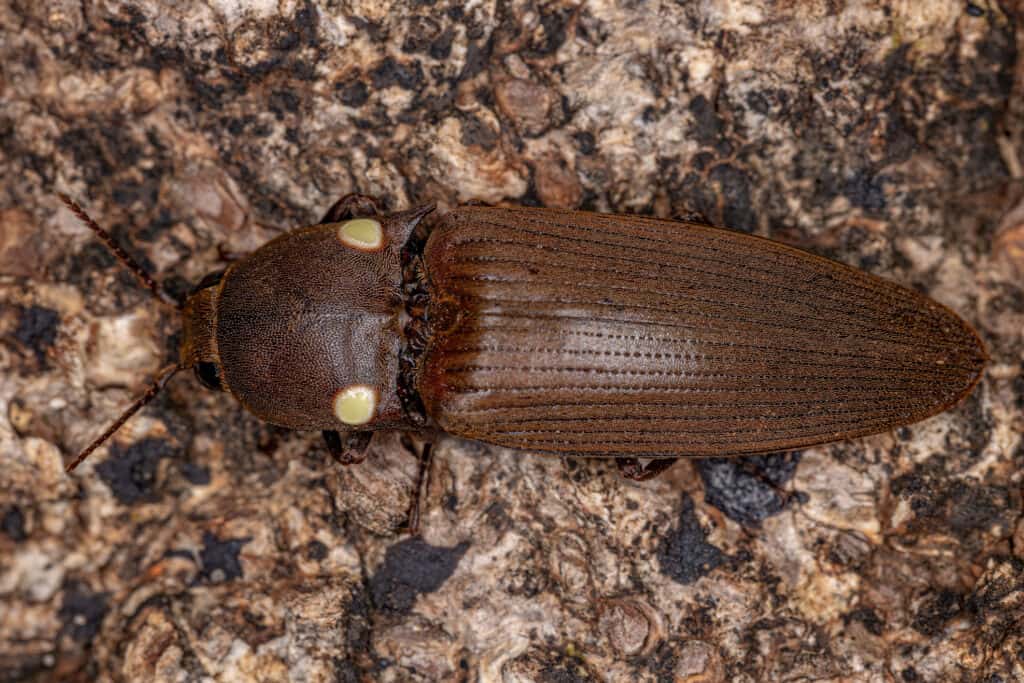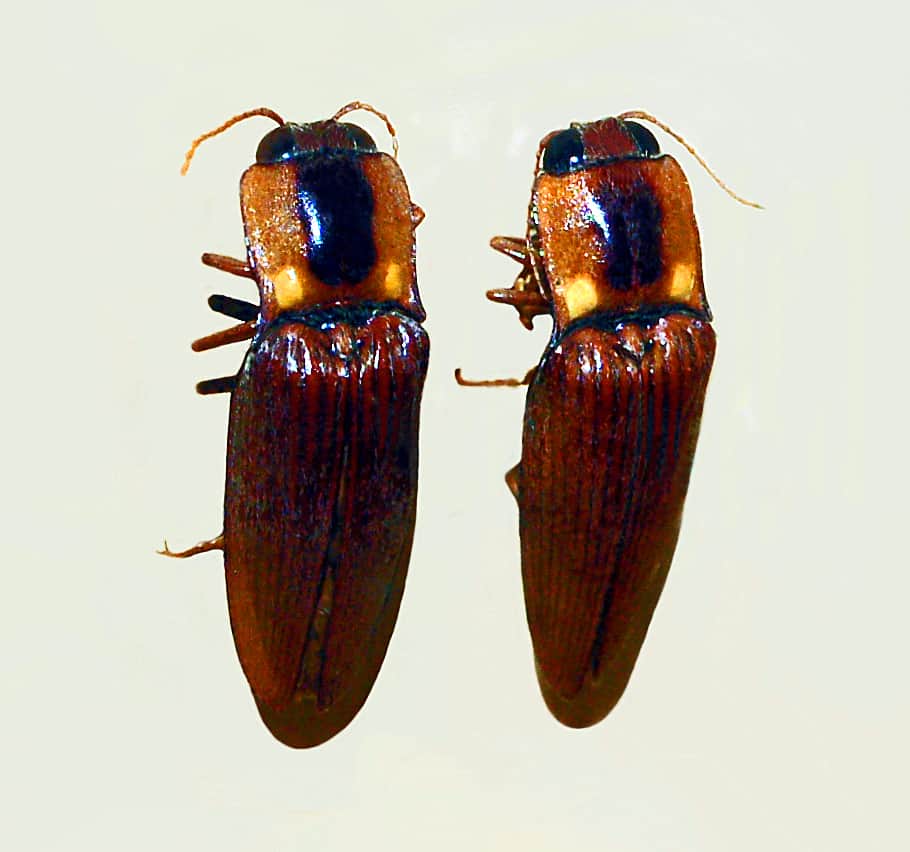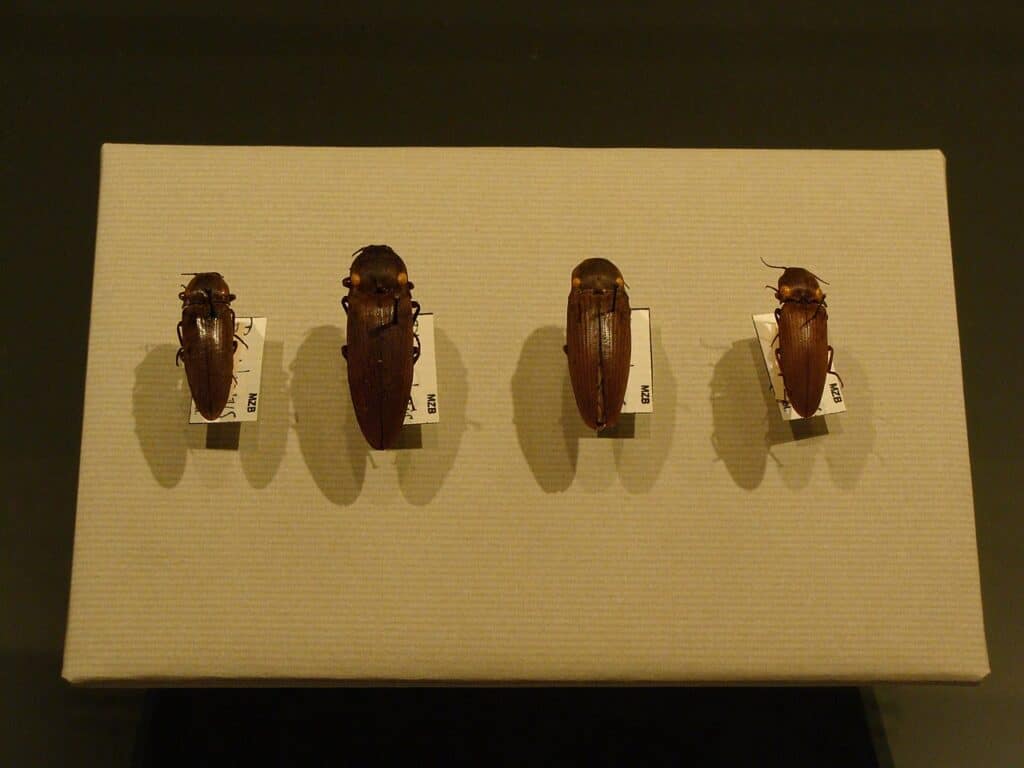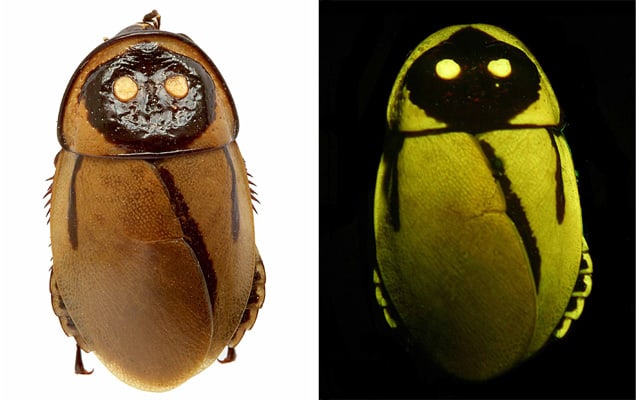You’ve probably seen or heard at least once in your lifetime about fireflies – the famous light-emitting insects! They form the Lampyridae family and are sometimes called glowworms or lightning bugs. Fireflies are often found in temperate and tropical climates inhabiting wet, wooded areas.
Fireflies are characterized by a phenomenon called bioluminescence, meaning they produce and emit light. Are they the only ones capable of doing this? Let’s find out!
1. Railroad Worms

©Aaron Pomerantz / CC BY 2.0 – License
Railroad worms get their name from the glowing spots along their body. They look like train car windows illuminated at night.
These worms are the larva or the larviform female adults of the Phrixothrix beetles. Their most distinctive characteristic is that they possess two colors of bioluminescence, meaning they can produce and emit two-colored light.
Railroad worms have eleven pairs of luminescent organs. They are found on their second thoracic segment and emit yellowish-green lights. Another pair is located on their heads and emit a red light. Some sources state that these bugs are the only ones to emit red light, and the color is believed to warn off predators.
2. Click Beetles

©iStock.com/ViniSouza128
Bioluminescent click beetles form the Pyrophorus genus. The lights they emit are similar to those of fireflies. However, unlike fireflies, these bugs do not flash. Instead, they glow continuously, although they can control the light intensity. The light becomes brighter if they’re threatened or touched by a predator.
So, where does their light come from? The two luminescent spots can be found at the pronotum’s posterior corners (the thorax’s foremost segment). They have another organ that emits a brighter light located on the most-anterior surface of the ventral abdomen. However, the light emitted by this organ can be noticed only if the click beetle is flying.
3. Pyrearinus candelarius

©Hectonichus / CC BY-SA 3.0 – License
The Pyrearinus candelarius bugs are dark brown insects with large eyes and yellowish-brown pronota. They’re black in the middle and feature small teeth that point backward.
These small beetles emit three lights. One is emitted by two luminescent organs located on the prothorax, at the posterior corners. These two spots emit green light. Moreover, the first segment on the abdominal area is luminescent, too, and emits yellow light.
Like the click beetles mentioned above, the Pyrearinus candelarius does not flash its light but glows continuously.
4. Cucubanos

©Eduard Solà / CC BY 3.0 – License
People often confuse cucubanos with fireflies. However, fireflies are in the Lampyridae family, while cucubanos are part of the Elateridae family of elaters. They are native to the island of Puerto Rico and are mostly found on the outskirts of Adjuntas. They are small insects, measuring around 1 inch in length, and are famous for their ability to emit light from the thorax.
Cucubanos emit three lights that people often label as two “headlights” and one “backlight.” They can turn these lights on and off independently.
A study shows that these bugs use their light signals to identify potential mating partners.
5. Lucihormetica luckae

©Peter Vršanský and Dušan Chorvát / CC BY-SA 3.0 – License
Lucihormetica luckae are giant cockroaches living in Ecuador! Their carapace emits two large lights and one small light, the three being yellowish-green. These spots glow when exposed to light, a phenomenon called autofluorescence. The cockroaches have been previously thought to have bioluminescence characteristics, although there isn’t enough evidence to prove this.
Unfortunately, there’s little to no possibility for you to see a Lucihormetica luckae, as they may have gone extinct. Only one cockroach specimen was collected 70 years ago. It is believed that they may have disappeared when their natural habitat, the Ecuadorian volcano Tungurahua, entered its 1999 eruptive phase.
6. Metallic Wood-Boring Beetles

©iStock.com/Brett_Hondow
While metallic wood-boring beetles aren’t bioluminescent, they are known for their glossy iridescent colors. What does this mean? Iridescence is a phenomenon in which surfaces change colors depending on the angle of view. So, these bugs appear to have one color if you look from above and another from a different angle.
The iridescent colors are caused by structural coloration. In short, their bodies reflect specific frequencies of light. If you’ve ever looked at a compact disc changing colors, this is the same effect.
7. Soldier Beetles

©Bildagentur Zoonar GmbH/Shutterstock.com
Soldier beetles are soft-bodied insects in the Cantharidae family. They are sometimes called leatherwings because their wings have a leather-like texture. While these bugs aren’t bioluminescent, they are often mistaken for fireflies, the most famous light-emitting insects!
Soldier beetles are known for their heads mimicking a firefly’s colors. Even the soldier beetle’s thorax is similar to that of many firefly species.
Adult bugs feed on nectar, pollen, and other smaller insects, while their larvae feed on snails and other small ground creatures.
Up Next:
- 10 Animals That Glow in the Dark
- 4 Loud Bugs That Make Noise at Night
- Firefly Lifespan: How Long Do Fireflies Live?
The post 7 Bioluminescent Bugs That Light Up appeared first on AZ Animals.
from Animal News, Facts, Rankings, and More! - AZ Animals https://ift.tt/SVN3xUg